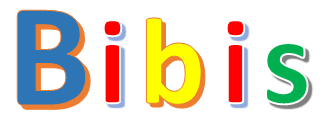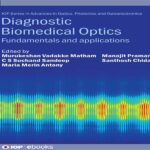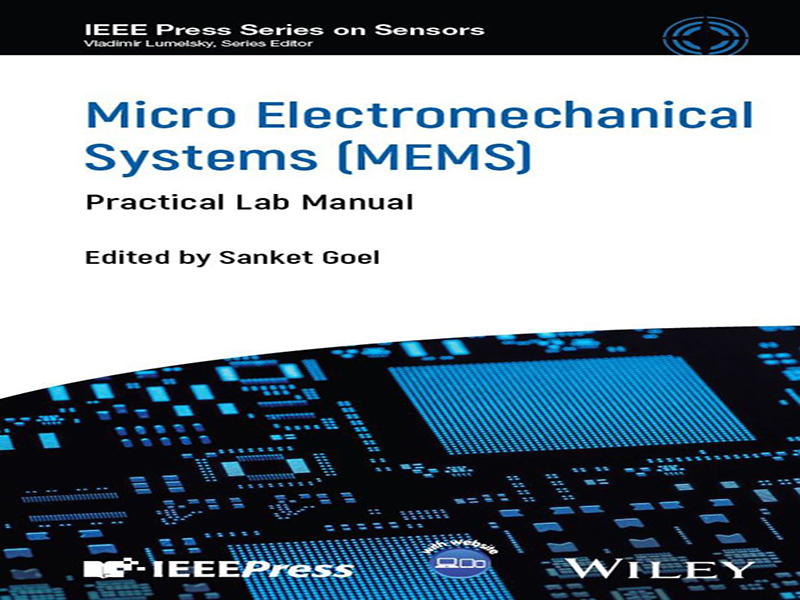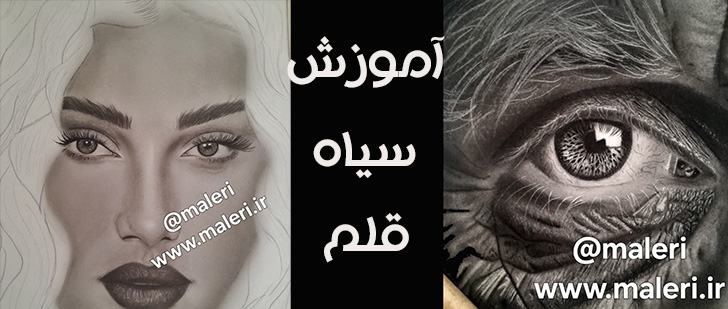- عنوان کتاب: Micro Electromechanical Systems (MEMS)
- نویسنده: Sanket Goel
- حوزه: الکترومکانیک
- سال انتشار: 2025
- تعداد صفحه: 274
- زبان اصلی: انگلیسی
- نوع فایل: pdf
- حجم فایل: 8.35 مگابایت
فناوریهای نوظهور به شناسایی و پرداختن آسان به چالشهای علمی حیاتی در زمینههای مختلف کمک میکنند. از این میان، حوزههای برجسته معاصر شامل تشخیص مولکولی، زیستشناسی سلولی، علوم اعصاب، دارورسانی، میکروبیوتکنولوژی، میکرومهندسی (ساخت)، حسگرها (پوشیدنی) و مهندسی نانو/میکرومواد، سیستمهای میکروالکترومکانیکی (MEMS) و میکروفلوئیدیک هستند. فناوری MEMS با استفاده از فرآیند ساخت دقیق زیرمیکرون، در ادغام میکروحسگرها در سیستم برتری دارد. در عین حال، میکروفلوئیدیک پتانسیل خود را در دستکاری سیالات با حجم نانو/میکرو برای آزمایش خودکار از طریق ساخت میکروکانالهای پشتیبانیشده با MEMS افزایش میدهد. جالب توجه است که فناوری MEMS طیف گستردهای از تکنیکهای پیشرفته ساخت میکرو، از جمله لیتوگرافی نوری، تولید افزایشی زیرمیکرون، الکترونیک چاپی، رسوبگذاری لایه نازک نانو/میکرون، برجستهکاری داغ، رسوبگذاری پرتو الکترونی، میکروماشینکاری لیزری، ساختهای به کمک لیزر، ماشینکاری میکرو-الکترو تخلیه و حکاکی فازی را در بر میگیرد. پتانسیل فناوریهای MEMS اغلب به دلیل غیرقابل دسترس بودن و زبان فنی سطح بالای آنها محدود است، که چالشهایی را برای دانشجویان کارشناسی، کارشناسی ارشد و محققان صنعتی تازهکار ایجاد میکند. برای آزادسازی پتانسیل عظیم و اطمینان از اینکه این محققان میتوانند پیشرفتهای بلادرنگ در محصولات MEMS داشته باشند، زبان باید برای مخاطبان گستردهتر قابل فهمتر شود. این کتاب با گردآوری اطلاعات فنی در یک کتابچه راهنمای آزمایشگاهی که برای تمرین عملی و درک واضح طراحی شده است، به این شکاف حیاتی میپردازد. این کتاب تخصص محققان را برای ایجاد یک کتابخانه جامع برای تسهیل انتقال دانش فراهم میکند. محتوای نوشتاری توسط ویدیوهای آموزشی دقیق پشتیبانی میشود و راهنماییهای گام به گام بیشتری را به خوانندگان ارائه میدهد. این کتاب به چهار بخش اصلی طبقهبندی شده است: ۱. شبیهسازیهای میکروفلوئیدیک (فصلهای ۱-۲) ۲. تکنیکهای پیشرفته ساخت MEMS (فصلهای ۳-۷) ۳. توصیف مواد (فصلهای ۸-۹) ۴. کاربردهای جالب (فصلهای ۱۰-۱۲)، و به دنبال آن چشمانداز کتاب و دامنه آینده (فصل ۱۳). پیچیدگی در مطالعات تجربی را میتوان با استفاده از ابزارهای محاسباتی که به کشف و بهینهسازی پارامترهای ناشناخته برای بینشهای عمیقتر کمک میکنند، برطرف کرد. فصل ۱ یک راهنمای گام به گام در مورد استفاده از ابزار شبیهسازی COMSOL برای درک پروفایلهای غلظت در کانالهای میکروفلوئیدیک (طرحهای Y شکل و T شکل) ارائه میدهد. این فصل با اصول طراحی CAD برای شکلهای مورد نیاز کانال میکروفلوئیدیک، تبدیل فایلها و تنظیم پارامترهای محاسباتی آغاز میشود. خواننده بررسی خواهد کرد که چگونه تغییرات در نرخ جریان دو سیال با غلظتهای منحصر به فرد بر پروفایلهای اختلاط یا غلظت تأثیر میگذارد. علاوه بر این، این شبیهسازی به خواننده اجازه میدهد تا با تغییر غلظت سیالات، پارامترهای جریان و شکل کانالها در پایان این آزمایش، پروفایلهای غلظت منحصر به فردی ایجاد کند. فصل 2 اهمیت تولید قطرات میکروفلوئیدیک را برجسته میکند و مکانیسم تولید و کاربردهای آنها را در سناریوهای بلادرنگ بررسی میکند. پرکاربردترین شکلهای میکروفلوئیدیک برای تولید قطرات شامل اتصال T، تمرکز جریان و دستگاههای هم-جریان است. این فصل بر طراحی اتصال T (مدلسازی CAD نیز در فصل 1 مورد بحث قرار گرفته است) تمرکز دارد و پارامترهای فرآیند را در ابزارهای محاسباتی تنظیم میکند تا دادههای عددی برای تولید ریزقطرات مختلف به دست آید. این به خواننده کمک میکند تا قبل از انجام مطالعات بلادرنگ برای کاربردهای متعدد، از جمله آزمایشهای آزمایشگاهی روی تراشه، سنتز شیمیایی و تجزیه و تحلیل سلولی، ریزقطرات را شبیهسازی و تولید کند. علاوه بر این، این کتاب بینشهای عملی در مورد مفاهیم پیشرفته میکروساخت با استفاده از فناوریهای MEMS ارائه میدهد. فصل 3 بر نقش حیاتی فرآیند فوتولیتوگرافی و ماده مقاوم در برابر نور برای توسعه دستگاههای MEMS تأکید میکند. این بخش، اطلاعات مربوط به طبقهبندی اتاقهای تمیز و مقایسه بین هر دو فرآیند (یعنی با کمک اتاق تمیز و بدون کمک) را برجسته میکند. این بخش، دقت ابعادی، هزینه، آموزش، اتوماسیون و مناسب بودن را مورد بحث قرار میدهد. علاوه بر این، اطلاعات گام به گام در مورد این دو فرآیند، یعنی از طریق کمک اتاق تمیز (یعنی لیتوگرافی ماسکشده معمولی) و بدون کمک اتاق تمیز (یعنی استفاده از واحد لیزر) برای توسعه میکرودستگاهها، افشا میشود. علاوه بر این، نمایش فلوچارت تصویری هر دو فرآیند فوتولیتوگرافی، مفاهیم پیچیده را ساده میکند و خوانندگان را قادر میسازد تا ایدههای نوآورانهای برای توسعه میکرودستگاهها ارائه دهند. پیشرفتها در تولید افزایشی در مقالات علمی معتبر مستند شدهاند. با این حال، تبدیل این تحقیقات به کاربردهای عملی همچنان یک چالش است. فصل ۴ بینشهایی در مورد دو فناوری مهم چاپ سهبعدی (یعنی استریولیتوگرافی (SLA) یا پردازش نور پویا (DLP) و مدلسازی رسوب ذوبشده (FDM)) ارائه میدهد. این فصل مفاهیم چاپ سهبعدی، انواع، عملکرد آنها و کاربردهای مرتبط را معرفی میکند که همگی به ارزش عملی مطالب خوانده شده میافزایند…
Emerging technologies assist in effortlessly identifying and addressing crucial scientific challenges in multiple fields. Of these, prominent contemporary areas include molecular diagnostics, cell biology, neuroscience, drug delivery, micro‐biotechnology, microengineering (fabrication), sensors (wearable), and nano/micromaterial engineering, micro electro mechanical systems (MEMS) and microfluidics. MEMS technology excels in integrating microsensors within the system, using its submicron precision fabrication process. At the same time, microfluidics advances its potential in manipulating nano/micro‐volume fluids for automated testing through MEMS‐supported microchannel fabrications. Interestingly, MEMS technology encompasses a broad range of advanced microfabrication techniques, including photolithography, submicron additive manufacturing, printed electronics, nano/micron thin film depositions, hot embossing, e‐beam deposition, laser micromachining, laser‐assisted fabrications, micro‐electro discharge machining, and phase etching. The potential of MEMS technologies is often limited due to their inaccessibility and high‐level technical language, which poses challenges for undergrads, postgrads, and entry‐level industrial researchers. To unlock the great potential and ensure that these researchers can make real‐time advances in MEMS products, the language must be made more understandable to a broader audience. The book addresses this critical gap by compiling technical information into a lab manual designed for hands‐on practice and clear understanding. It provides expertise from research scholars to create a comprehensive library to facilitate knowledge transfer. The written content is supported by detailed instructional videos, offering the readers additional step‐by‐step guidance. This book is classified into four major parts: 1. Microfluidic simulations (Chapters 1–2) 2. Advanced MEMS fabrication techniques (Chapter 3–7) 3. Material characterizations (Chapters 8–9) 4. Interesting applications (Chapters 10–12), followed by the outlook of the book and future scope (Chapter 13) The complexity in experimental studies can be overcome by using computational tools, which help uncover and optimize unknown parameters for deeper insights. Chapter 1 offers a step‐by‐step guide on using the COMSOL simulation tool to understand concentration profiles in microfluidic channels (Y‐shaped and T‐shaped designs). The chapter begins with the fundamentals of CAD design for required microfluidic channel shapes, file conversions, and setting of computational parameters. The reader will explore how variations in flow rates of two fluids with unique concentrations affect mixing or concentration profiles. Moreover, this simulation allows the reader to create individual concentration profiles by changing the concentrations of fluids, flow parameters, and channel shapes at the end of this experiment. Chapter 2 highlights the importance of microfluidic droplet generations, exploring the mechanism of generation and their applications in real‐time scenarios. The most used microfluidic shapes for droplet generations include T‐Junction, flow focusing, and co‐flow devices. This chapter focuses on the T‐Junction design (CAD modeling is discussed in Chapter 1 as well) and sets up the process parameters in computational tools to obtain numerical data for generating varying microdroplets. This will help the reader to simulate and generate microdroplets before conducting real‐time studies for multiple applications, including lab‐on‐chip experimentations, chemical synthesis, and cell analysis. Further, this book provides practical insights into advanced microfabrication concepts using MEMS technologies. Chapter 3 emphasizes the critical role of the photolithography process and photoresist material for MEMS device development. It highlights the information on the classification of clean rooms and the comparison between both processes (i.e., clean room assisted and unassisted). It discusses dimensional accuracy, cost, training, automation, and suitability. Additionally, step‐by‐step information on these two processes is disclosed, i.e., via cleanroom assistance (i.e., conventional masked lithography) and without cleanroom assistance (i.e., using a laser unit) to develop microdevices. Moreover, the pictorial flowchart representations of both photolithography processes simplify complex concepts, enabling readers to come up with innovative ideas for develop microdevices. Advances in additive manufacturing are documented in state‐of‐theart literature; however, translating this research into practical applications remains a challenge. Chapter 4 provides insights into two important 3D printing technologies (i.e., stereolithography (SLA) or dynamic light processing (DLP) and fused deposition modeling (FDM). This chapter introduces the concepts of 3D printing, types, their functioning, and related applications, all of which add hands‐on value to the reader. It begins with designing and developing a practical functioning Y‐shaped microfluidic device fabricated using SLA technology. All the steps are clearly explained, from the initial design of the chip to the slicing operations performed in 3D printing software until the final printed part is achieved. Further, the printed microfluidic device is validated through generating microdroplets, offering proof of concept. In FDM‐based printing, the use of the thermoplastic filaments and the slice parameters are discussed in detail. As with other 3D printing methods, FDM‐based printing requires the initial CAD modeling, followed by the slicing tool used to load to the respective 3D printer. Each step is discussed in detail to help the reader easily reproduce the results. This chapter demonstrates the fabrication of an electrochemiluminescence (ECL) sensor to capture the luminescence signals. Interestingly, this process combines conductive PLA filament (for the sensor region) and standard PLA filament (for the supporting structure) to create the complete sensor. This process creates never‐before‐seen insights for the reader in making customized sensors using 3D printing technology. Graphene is a revolutionary 2D material with exceptional electrophysical properties, making it a key component in developing sensitive sensors for multiple applications. Nevertheless, the tedious conventional production process limits its potential for real‐time applications. Chapter 5 introduces an alternative, ultrafast process for the one‐step production of graphene‐based sensors. The chapter also details the production of a one‐step graphene derivative (reduced graphene oxide (rGO)). The assistance of an advanced photothermal reduction approach via two different laser systems, CO2 (10.6 μm) and blue diode (450 nm) lasers, respectively, in producing graphene and rGO, is also elaborated. The process leverages commercially available substrates like polyimide (PI) and grade 1 filter paper to produce user‐defined conductive graphene and rGO patterns. Critical laser optimization and working parameters are demonstrated to help readers reproduce the process to obtain conductive graphenized material. In addition, detailed steps for designing and fabricating a three‐electrode sensor for electrochemical validations are provided. The chapter’s detailed guidance of this process encourages the reader to utilize this advanced laser‐assisted technology to develop one‐step user‐defined graphene traces for additional applications. Microfluidics, a fascinating micro‐world field that delivers faster reaction responses with low consumption of reagent volumes, is first introduced in Chapter 1 (via simulations) and revisited in Chapter 3 to familiarize the reader with key concepts. Chapter 6 then provides the fundamentals for producing microfluidic devices using a soft lithography technique (i.e., using cleanroom free fabrication). This chapter also discusses the properties of flexible polymer polydimethylsiloxane (PDMS). Interestingly, a nonconventional direct laser writing (DLW) system is introduced to perform maskless lithography. It benefits the reader to develop microfluidic devices in the quickest possible technology at high resolutions. The chapter discusses photosensitive material coatings on glass slides (positive and negative resists), on which the mold formations are made via laser writings. The chapter details the development and etching mechanism, including suitable reagents needed to produce the desired pattern. Later, the concentration ratios of PDMS elastomers to their curing agents are discussed. Step‐by‐step guidance ensures proper spreading and curing of the mixture on the glass mold so that readers can avoid potential handling errors. Further, the stamped patterns onto the cured polymer are bonded to the glass slides through plasma treatment to make a functioning microfluidic device. This information encourages the reader to design their own microchannels and devices in multiple fields, from biomedical diagnostics to engineering. One‐step production of graphene electrodes was introduced in Chapter 5, while Chapter 7 explores the next generation methods for electrode fabrication. The three prominent ways (automated inkjet printing, screen printing, and physical vapor deposition (PVD)) to fabricate the electrodes are discussed in this chapter. Automated inkjet printing highlights simplicity and avoids using photomask, stencil, and physical assistance in making electrodes. The design of three electrode systems in CAD and the introduction of the graphical user interface (GUI) of the inkjet printer is described in detail. The chapter also covers file formatting and optimizing the ink properties during printing to ensure ease of reproduction. Moreover, screen printing technology is introduced as an additional section for massproducing electrodes. The chapter discusses the importance of ink, its viscosity, and the simplified adoption process. In addition, to enhance the reader’s hands‐on experience, step‐by‐step instructions are provided to design, fabricate, and print three‐electrode systems on the flexible polymer (PI). In the search to provide high‐resolution sensor fabrication technology, the PVD approach is introduced to obtain nanometer thick conductive coatings. Gold is the precursor or source in this demonstration to develop the biosensor. A highvoltage supply creates an electron beam to infuse on the gold source, while the fumes of the vaporized gold are directed to the region of interest to obtain nm coatings. All the deposition and precaution steps are noted in clear, straightforward language to enable the readers to replicate the process successfully. Understanding the structural, morphological, and optical properties of the materials used to fabricate sensors is crucial for achieving the desired reaction outcomes. To address this concern, Chapters 8 and 9 introduce several hands‐on material characterization techniques. Chapter 8 provides comprehensive information on morphological characterization techniques, including high‐resolution scanning electron microscopy (SEM), optical microscopy (LED‐based), optical goniometer, and additionally structural characterization method, Xray diffraction (XRD). Detailed fundamental theoretical information on each technique and the experimentation steps are provided. In SEM, secondary electrons emitted from the sample surface are directed to the detector to capture high‐resolution surface topography. The section begins by explaining the basic steps of sample preparation, including the deposition of a conductive layer (i.e., via sputtering) on the surface, followed by detailed instructions on the instrument parameters, and the final image analysis. Interestingly, the produced rGO material on filter paper in Chapter 5 is used as the test sample for better understanding and connectivity to the reader. Similarly, in optical microscopy, the procedure for capturing images and the limitations of resolutions of 100x are discussed. This technique is suitable for applications that do not require electron microscopy resolutions. The photoresist‐based microfluidic channels using the DLW technique produced in Chapter 6 are used in this experiment, and images captured at various resolutions are compared. The section also covers use of an optical goniometer or tensiometer to identify the materials surface nature (hydrophobicity and hydrophilicity). The surface tension between the solid, liquid, and gaseous phases is responsible for the droplet shape, which is discussed practically to measure its magnitude. The steps include sample preparation, parameter settings, imaging, and contact angle measurements. Additionally, the powerful technique XRD, which measures the crystal structure of the materials, is presented. The fundamentals of Bragg’s law and constructive interference patterns to record the peak signals are explained. The complete process (source, detector, and working parameters) on this high‐end instrument in depth is provided to the reader. Furthermore, step‐bystep instructions on sample preparation, precautions, data collection, analysis, and interpretations are provided so that readers can replicate this process. Chapter 9 provides detailed information on spectroscopy‐based characterization techniques, including UV‐Visible Spectroscopy (UVVis), Fourier Transform Infrared Spectroscopy (FTIR), Raman spectroscopy, and X‐ray photoelectron spectroscopy (XPS). The electronic transitions within the material are analyzed through unique peak positions (wavelength‐based) in UV‐Vis, with each step described in detail. The steps are broken down into device calibration, blank or reference measurement, and sample analysis.
این کتاب را میتوانید از لینک زیر بصورت رایگان دانلود کنید:
Download: Micro Electromechanical Systems (MEMS)




































نظرات کاربران